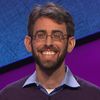Click here to read an original op-ed from the TED speaker who inspired this post and watch the TEDTalk below.
We think we know our home planet. After all, we know its landscape. We know its contours. We know how to get from one place to the next.
But the truth is, what we know about Earth is really only about 30 percent of it -- the terrestrial part of it. The other 70 percent, the ocean, may as well be an entirely alien planet to us humans. We can't spend more than a few minutes there without at least some sort of breathing apparatus. If we go too deep too quickly, we can get crushed by pressure. And if we were to be dropped into the middle of a vast body of water without reference points nearby, we'd be completely disoriented.
Yet David Gallo highlights what is perhaps the most important and fascinating fact about the ocean, namely, just how surprisingly little we know about it:
[T]oday, we've only explored about 3 percent... of what's out in the ocean. Already we've found the highest mountains, the world's deepest valleys, underwater lakes, underwater waterfalls... And in a place where we thought there was no life at all, we find more life (we think) and more diversity and density than in the tropical rainforest, which tells us that we don't know much about this planet at all. There's still 97 percent, and either that 97 percent is empty, or just full of surprises.
We all have a tendency to make assumptions about how much we know. Psychologist Daniel Kahneman calls this cognitive bias "What You See Is All There Is." We look at what is front of us, and assume that we've learned all we need to know about it. So, for example, we live on the land, and therefore, we think that's where all the interesting things happen.
What we ignore -- or at least forget -- is just how much richness there is below the surface.
One of the wonderful ways that Judaism pushes us to "go deeper" is through its particular way of reading sacred texts, called "PaRDeS." While the word "pardes" literally means "orchard," what it really means is an acronym for four different levels of studying: "p'shat," simple, "remez," hint, "drash," interpretation and "sod," secret.
The PaRDeS method of reading texts forces us to go below the surface of what we initially see. Instead, each level invites us to discover more and more. In the words of Rabbi Dr. Norman Cohen, "The mystics of the Middle Ages understood the Torah to be an inexhaustible well that contains many levels of potential meaning, and all the reader needs to do is find a way to plumb its depth." (Cohen, The Way Into Torah, 78)
When we look at texts in this way, we begin with the text itself -- what is saying on its own terms? Regardless of whether we agree or disagree, whether we like or dislike it, we do have to ask, "What does it say on its surface?" But even though that is where we begin, it is not where we stop.
Instead, we next connect the text to other stories and sources: What other allusions does this text have? What else does it reminds us of? After that, we ask, "What meaning can we draw from it today? How can we interpret this text so that we can find lessons from it?" Finally, we explore how this text can give us a deeper understanding of ourselves and our world.
The truly powerful things about the PaRDeS method is that also allows us to understand people's own unique stories more deeply, as well. This idea, explained by Rabbi Dayle Friedman in the book Jewish Pastoral Care, works like this: the p'shat is the simple level of what is actually happening to someone, the remez hints at their emotional response, the drash turns into how they will create and construct meaning around what has happened to them, and finally, the sod is the intimate and often wordless connection between people and the world at large.
Whether it is the ocean, a sacred text, or another person's story, too often, we assume that all we need to know about something is what we see on the surface. But David Gallo's work gives us a beautiful metaphor: as we begin to realize just how much we don't know, we begin to understand that there is an inexhaustible sense of mystery, wonder and amazement in this world.
Ultimately, the more we discover, the more we learn there is to discover. We just need to plumb its depths.
Ideas are not set in stone. When exposed to thoughtful people, they morph and adapt into their most potent form. TEDWeekends will highlight some of today's most intriguing ideas and allow them to develop in real time through your voice! Tweet #TEDWeekends to share your perspective or email tedweekends@huffingtonpost.com to learn about future weekend's ideas to contribute as a writer.
